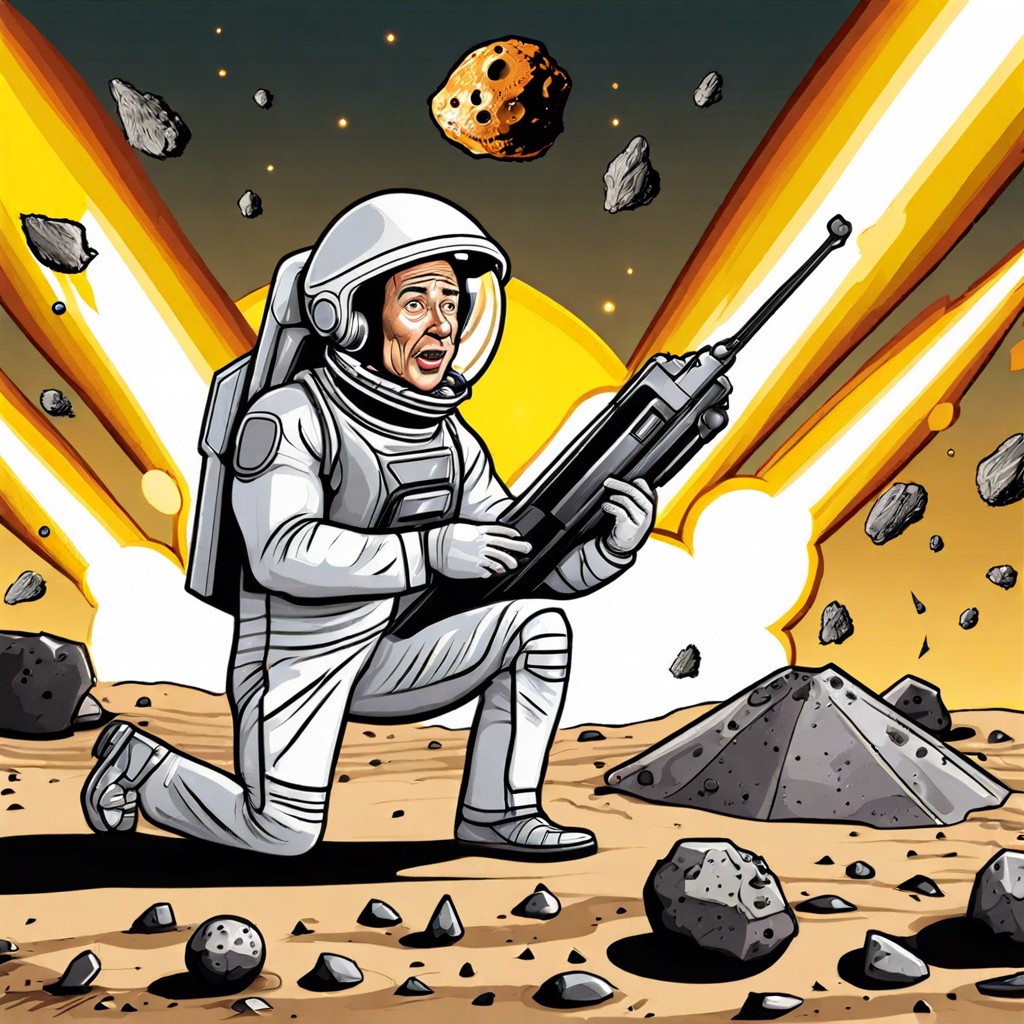If Apophis hit Earth, this article covers the potential consequences and how it could impact our planet.
Hold onto your doomsday hats, folks! What if the infamous asteroid Apophis got a bit too cozy with Earth? We’re diving into impact zones, instant chaos, climate catastrophe, and tsunamis that make your last beach vacation look like a splash in the kiddie pool. From cooking the planet to potential ways humanity might adapt, we’ll bust out all the survival tips and scientific lore you need. All the juicy deets right here!
Key takeaways:
- Apophis impact = disasters, chaos, survival tips, climate effects.
- Impact zones = tsunamis, earthquakes, firestorms, global chaos.
- Climate aftermath = impact winter, acid rain, greenhouse effect.
- Tsunamis = global chaos, waves, earthquakes, volcanoes, landslides.
- Adaptation strategies = bunkers, agriculture, renewable energy, healthcare, relocation, education, cooperation.
Impact Location and Immediate Effects

So, let’s say Apophis pays us an unwanted visit. The first thing you’d need to know is where it decides to crash the party on Earth. If it lands in the ocean, expect a splash that’s an understatement—giant tsunamis traveling at breakneck speeds. Coastal cities better start practicing their synchronized swimming.
If it aims for land, brace yourself for earthquakes and massive shockwaves. Think of it as the world’s worst piñata smashing down. Inhabitants within hundreds of miles would feel the ground tremble and buildings could collapse like dominos.
Firestorms would likely ignite from the heat. It’s like Mother Nature suddenly yelling, “Let’s barbecue everything!” Debris would fly everywhere, causing more chaos.
Lastly, whichever country ends up hosting this cosmic gatecrasher will probably wish they could rewrite the guest list.
Global Climate Consequences
Imagine a giant asteroid slammed into the Earth’s surface, throwing huge amounts of dust and debris into the atmosphere. This wouldn’t just be a bad day; it would be the cosmic equivalent of shaking a snow globe.
First up, “impact winter.” That’s when all that debris blocks out sunlight, causing temperatures to drop faster than your interest in a boring movie. With less sunlight, plants struggle to photosynthesize, leading to widespread agricultural failure. Say goodbye to your avocado toast.
Next, expect acid rain showers, but not the refreshing kind. The collision vaporizes materials that release sulfuric gases. These gases mix with water in the atmosphere, turning into acid rain. Now your car and your hairdo will suffer in equal measure.
And don’t even get started on ozone layer depletion. Increased levels of various chemicals could break down ozone molecules. So while you’re wearing three layers of sweaters for the cold, the UV rays will be adding a new level of sunburn disasters.
Finally, let’s not forget the possibility of a runaway greenhouse effect. The initial cooling might be followed by rapid warming as carbon dioxide levels rise, leading to, you guessed it, more climate chaos.
In summary, hitting “Apophis” on the cosmic piñata means Earth gets a bag of mixed climate tricks, none of them good.
Tsunamis and Secondary Disasters
Imagine a bowling ball plopping into a tranquil pond. Now swap that bowling ball with a mountain-sized space rock and the pond with, well, the entire planet’s oceans. The colossal splash would unleash devastating tsunamis, creating watery chaos far beyond the coastlines.
Monster waves would race across the globe, capsizing ships and making beach vacations a fond memory. Coastal cities could be swamped, turning skyscrapers into impromptu snorkeling spots. Think Atlantean, but less mythical and more “I should’ve bought flood insurance.”
Beyond the big waves, there’d be extra mayhem: earthquakes triggered by the impact, volcanic eruptions joining the apocalyptic party, and even landslides. Picture Mother Nature’s worst case of the Mondays ever. Knock-on effects? Reduced global temperatures, wrecked crops, and a bummed-out biosphere.
Chaos domino effects in action!
Long-term Ecological Impact
Picture a world where lush forests become ghostly silhouettes and biodiverse regions transform into barren wastelands. Funny? Hardly. More like a cosmic prank on steroids.
First off, the dust cloud from the impact would block sunlight, creating a pseudo-winter that could last for years. No light, no photosynthesis. Goodbye crops, hello starvation.
Acid rain would make a stinky comeback, raining down like Mother Nature’s harsh critique. Soil degradation would follow—our once fertile earth turning sour and less productive.
Aquatic ecosystems? They’d also take a big hit. Contaminated water would challenge aquatic life, causing dramatic drops in fish and marine populations. Say adieu to your favorite sushi.
Species extinction would spike. Plants and animals not adaptable to drastic climate shifts would vanish, leading to a less resilient biosphere. Evolution might re-run its episodes, but we’d miss a lot of great characters.
So, lots of doom and gloom, but hey—nature’s also a fighter. Recovery would be slow, but not impossible. Maybe, just maybe, some species would adapt, evolve, and thrive in ways we haven’t imagined.
Human Survival and Adaptation Strategies
Picture this: Humanity faces a cataclysmic asteroid strike. The immediate aftermath aside, how do we adapt and survive in the long-term?
First off, underground bunkers. These would provide temporary shelter from initial chaos. Think of them as glorified man-caves, but with less beer and more rations.
Next, agriculture would take a wild turn. Say goodbye to idyllic farms; hello, hydroponics and vertical gardens. We’d harness technology to grow food in controlled environments away from the ash-filled skies.
Pivoting to energy, we’d see a boom in renewable sources. Solar panels, wind turbines, and possibly even geothermal solutions would become our best friends, ensuring that power isn’t just a relic of the past.
Healthcare would need a revolutionary revamp. Remote medicine and telehealth services would flourish, keeping communities healthy even in isolation.
Population relocation is another biggie. Coastal cities might need evacuations to escape rising waters from post-impact tsunamis. Inland cities could transform into bustling hubs of survival activity.
Education and communication would adapt too. Distance learning would become the norm, ensuring the next gen doesn’t turn into a bunch of clueless cave dwellers.
And, of course, community cooperation. Survival can’t be a solo act. We’d see unprecedented levels of collaboration, with societies pulling together like never before.
In a nutshell, humans would innovate, coopérate, and get downright scrappy to ensure survival in a post-apocalyptic landscape. Survival isn’t just about a heartbeat; it’s about thriving in adversity. Dust off those creative juices—who knew dodging asteroids could be so transformative?




